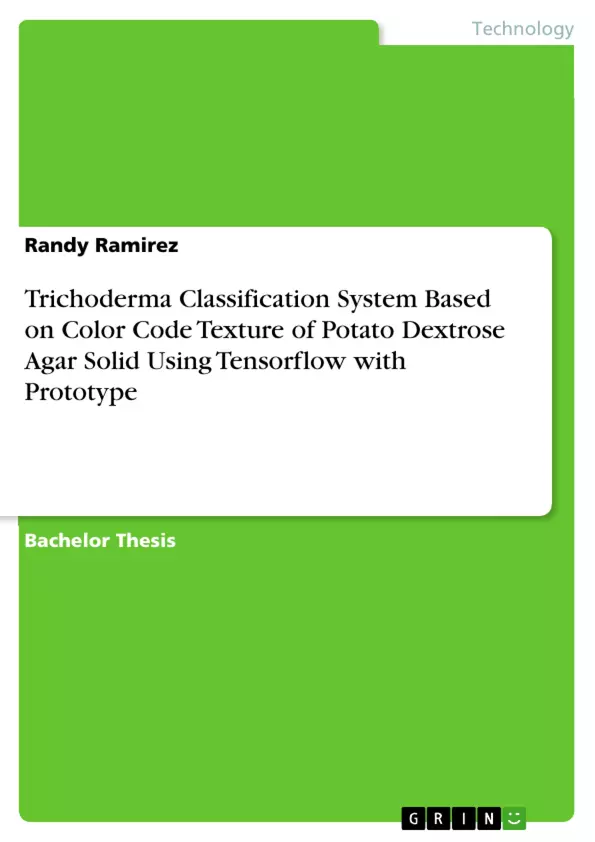A color code, also known as a color scheme, is a method of showing details using various colors. The parameters ambient, diffuse, specular, opacity, and color describe a solid color texture. These color-coded textures are used to determine the different colors of Trichoderma. Trichoderma is a free-living fungus that is highly interactive in the root, soil, and foliar habitats and is offered to organic producers as a wide range of Trichoderma-based products. Plant diseases can be controlled with biopesticides, which are biological insecticides. Trichoderma species are also important because they stimulate plant development while inhibiting the growth of plant diseases.
Due to the usage of this microbial inoculant in Trichoderma-based products, researchers are interested in learning more about the many prospective advantages of Trichoderma. Plant diseases, growth, breakdown, and bioremediation are all discussed. This article will also look at how they produce secondary metabolites in the agroecosystem. According to Zin and Badaluddin, these groundbreaking discoveries bring significant benefits to the agriculture industry in terms of environmentally friendly farming practices.
Inhaltsverzeichnis (Talaan ng Nilalaman)
- Kabanata 1: Introduksyon
- Kabanata 2: Pagsusuri sa Literatura
- Kabanata 3: Metodolohiya
- Kabanata 4: Resulta at Diskusyon
- Kabanata 5: Konklusyon at Rekomendasyon
Zielsetzung und Themenschwerpunkte (Mga Layunin at Pangunahing Paksa)
Ang pangunahing layunin ng pag-aaral na ito ay bumuo ng isang sistema ng klasipikasyon para sa Trichoderma batay sa kulay at tekstura nito gamit ang TensorFlow at prototype. Layunin din nitong mapabilis at mapabuti ang proseso ng pagkilala sa mga malulusog at kontaminadong Trichoderma sa laboratoryo.
- Pagpapaunlad ng isang desktop application system para sa awtomatikong klasipikasyon ng Trichoderma.
- Paggamit ng TensorFlow para sa pag-analisa ng imahe ng Trichoderma.
- Pagtatasa ng kahusayan at pagiging maaasahan ng binuong sistema.
- Pagtukoy ng mga potensyal na pagpapabuti sa sistema.
- Pag-aaral sa epekto ng awtomatikong klasipikasyon sa kalidad ng kontrol sa laboratoryo.
Zusammenfassung der Kapitel (Buod ng mga Kabanata)
Kabanata 1: Introduksyon: Ipinakikilala ng kabanatang ito ang pangkalahatang konsepto ng pag-aaral, na naglalayong bumuo ng isang desktop application na magkaklasipika ng Trichoderma batay sa kulay at texture nito gamit ang TensorFlow. Inilalahad din nito ang problema na sinisikap nitong solusyonan, ang pagiging manu-mano at nakakaubos ng oras ng kasalukuyang proseso ng klasipikasyon. Binibigyang-diin din ang kahalagahan ng pag-aaral para sa pagpapabuti ng kalidad ng kontrol sa laboratoryo ng Trichoderma.
Kabanata 3: Metodolohiya: Inilarawan sa kabanatang ito ang mga pamamaraan na ginamit sa pagbuo at pagsusuri ng sistema ng klasipikasyon. Detalyadong inilahad ang mga hakbang sa pag-develop ng application, mula sa pagkolekta ng datos hanggang sa paggamit ng TensorFlow para sa pagsasanay ng modelo. Inilarawan din ang disenyo ng prototype at ang mga kagamitan na ginamit, kasama na ang isang motorized camera dolly para sa pagkuha ng mga larawan ng Trichoderma. Ang metodolohiyang ginamit ay nagbibigay-daan sa isang mas sistematiko at masusing pagsusuri.
Kabanata 4: Resulta at Diskusyon: Inilahad sa kabanatang ito ang mga resulta ng pagsusuri sa binuong sistema, kasama na ang mga metrika ng pagganap nito. Sinuri ang pagiging functional at reliability ng application batay sa mga feedback mula sa mga respondent. Inilarawan din ang mga nakatagpo na problema, tulad ng mga bugs at errors, at ang mga potensyal na solusyon. Ang pagsusuri sa mga resulta ay nagbibigay ng malinaw na larawan ng kahusayan ng sistema.
Schlüsselwörter (Mga Salitang-Pangunahin)
Trichoderma, klasipikasyon, TensorFlow, prototype, desktop application, pagkilala sa imahe, kulay, tekstura, kalidad ng kontrol, awtomasyon.
Mga Madalas Itanong Tungkol sa: Sistema ng Klasipikasyon ng Trichoderma gamit ang TensorFlow
Ano ang pangunahing layunin ng pag-aaral?
Ang pangunahing layunin ng pag-aaral ay bumuo ng isang sistema ng klasipikasyon para sa Trichoderma batay sa kulay at tekstura nito gamit ang TensorFlow at isang prototype. Layunin din nitong mapabilis at mapabuti ang proseso ng pagkilala sa mga malulusog at kontaminadong Trichoderma sa laboratoryo.
Anong mga paksa ang sakop ng pag-aaral?
Sakop ng pag-aaral ang pagpapaunlad ng isang desktop application para sa awtomatikong klasipikasyon ng Trichoderma, paggamit ng TensorFlow para sa pag-analisa ng imahe, pagtatasa ng kahusayan at pagiging maaasahan ng sistema, pagtukoy ng mga potensyal na pagpapabuti, at pag-aaral sa epekto ng awtomatikong klasipikasyon sa kalidad ng kontrol sa laboratoryo.
Ano ang mga kabanata ng pag-aaral at ang kanilang nilalaman?
Ang pag-aaral ay may limang kabanata: Introduksyon (na nagpapakilala sa problema at layunin), Pagsusuri sa Literatura (hindi detalyadong inilarawan sa preview), Metodolohiya (na nagdedetalye sa mga pamamaraan at kagamitan, kasama ang isang motorized camera dolly), Resulta at Diskusyon (na nagpapakita ng mga resulta at pagsusuri), at Konklusyon at Rekomendasyon (hindi detalyadong inilarawan sa preview).
Anong mga teknolohiya ang ginamit sa pag-aaral?
Ang pangunahing teknolohiya na ginamit ay ang TensorFlow para sa pagpoproseso ng imahe at pagbuo ng modelo ng klasipikasyon. Isang desktop application din ang binuo bilang prototype.
Ano ang mga mahahalagang salita na nauugnay sa pag-aaral?
Ang mga mahahalagang salita ay kinabibilangan ng Trichoderma, klasipikasyon, TensorFlow, prototype, desktop application, pagkilala sa imahe, kulay, tekstura, kalidad ng kontrol, at awtomasyon.
Ano ang pangkalahatang metodolohiya ng pag-aaral?
Ang metodolohiya ay nagsasangkot ng pagkolekta ng datos, pag-develop ng isang desktop application gamit ang TensorFlow, pagsasanay ng modelo, pagsusuri ng pagganap ng sistema, at pagsusuri ng mga resulta. Isang motorized camera dolly ang ginamit sa pagkuha ng mga larawan ng Trichoderma.
Ano ang mga resulta ng pag-aaral (ayon sa preview)?
Ayon sa preview, ang kabanata 4 (Resulta at Diskusyon) ay naglalaman ng mga resulta ng pagsusuri sa binuong sistema, kasama na ang mga metrika ng pagganap nito, at mga nakatagpo na problema at potensyal na solusyon. Ang detalyadong resulta ay hindi inilarawan sa preview.
- Citation du texte
- Randy Ramirez (Auteur), 2020, Trichoderma Classification System Based on Color Code Texture of Potato Dextrose Agar Solid Using Tensorflow with Prototype, Munich, GRIN Verlag, https://www.grin.com/document/1061354



